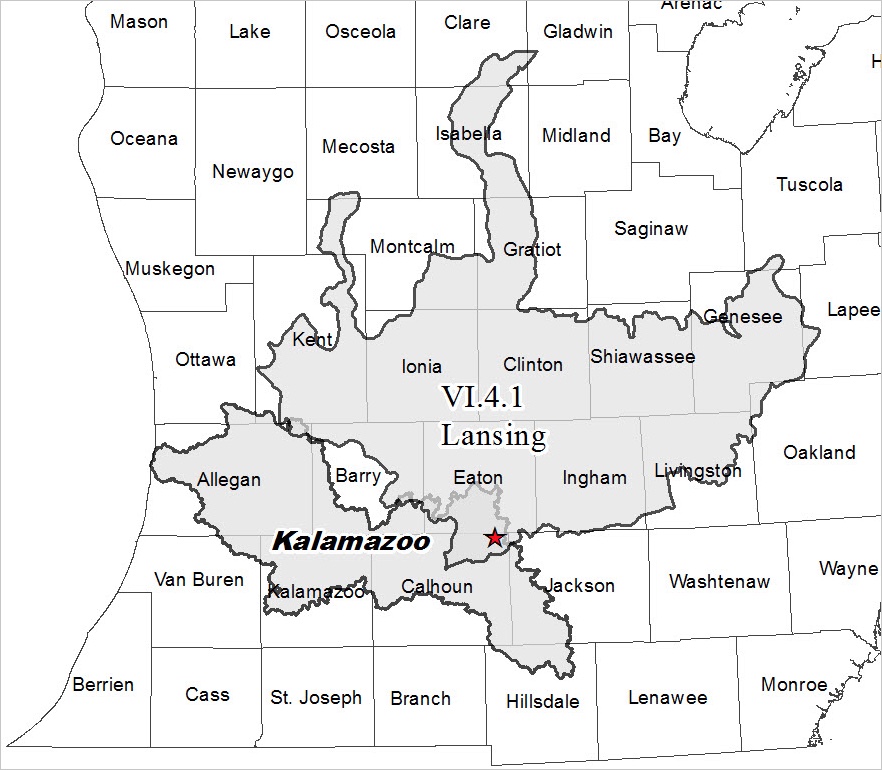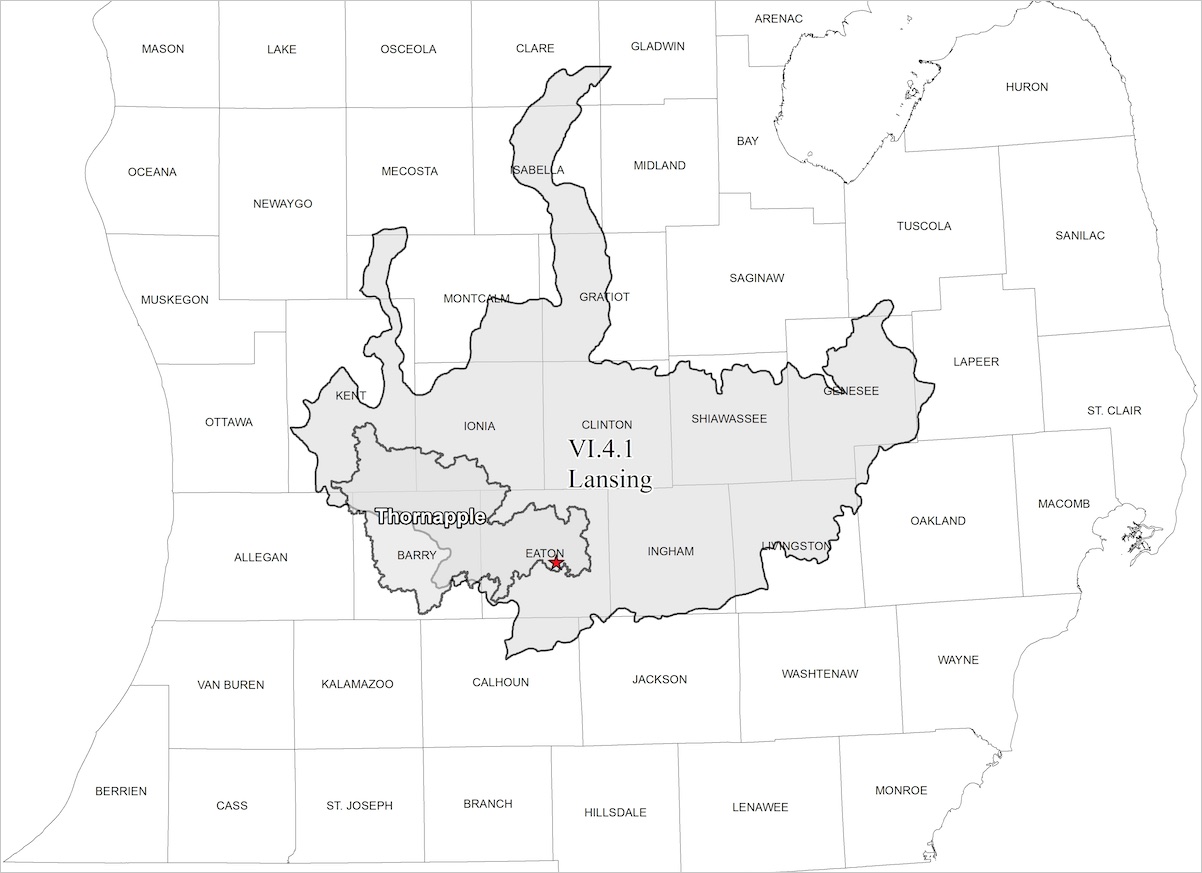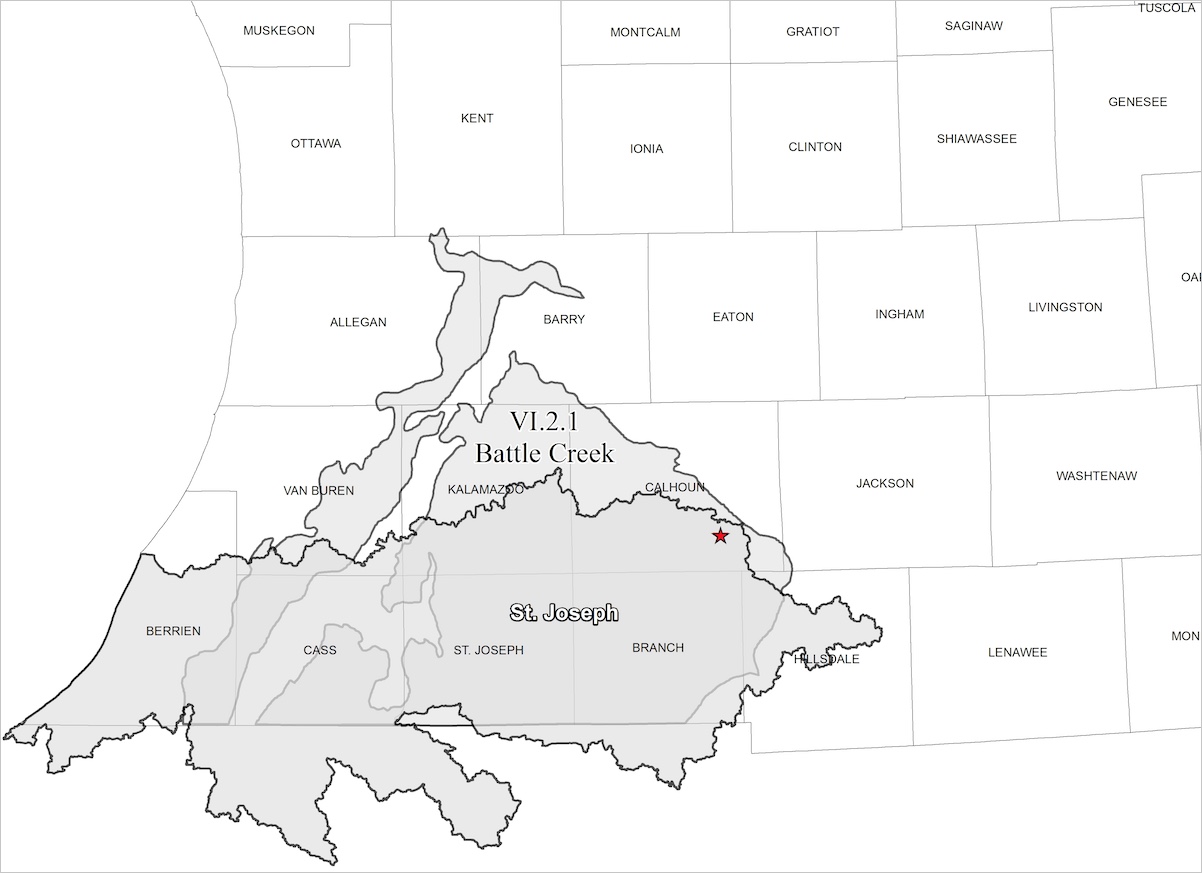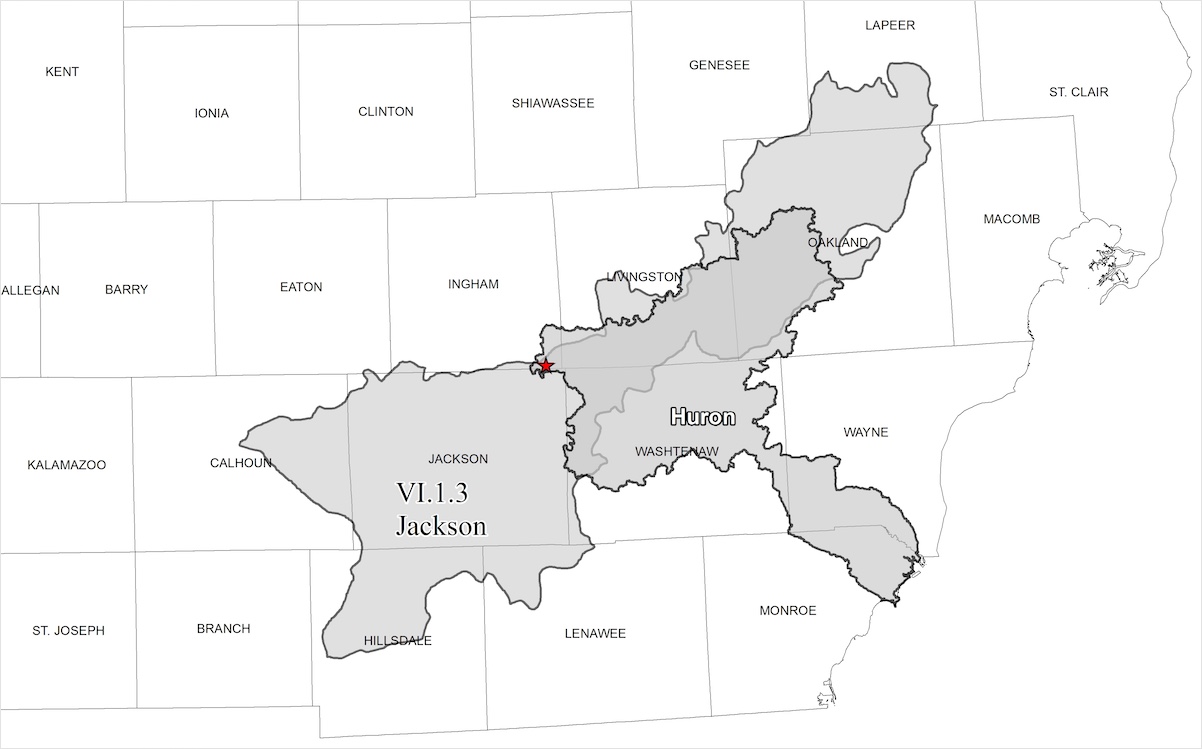Kalamazoo Watershed
The Kalamazoo Watershed Wetland Mitigation Bank site is a joint project consisting of approximately 350 acres of wetland mitigation bank on 450 acres of property in the Kalamazoo River Watershed and Lansing EcoRegion (VI.4.1). The primary goals of the project are to create emergent, scrub-shrub and forested wetlands by restoring a historic, substantially degraded wetland. The bank was sited to ensure a successful restoration that maximizes the benefits to the Kalamazoo Mitigation Watershed. During flood events, the Bank will serve to capture and store floodwaters reducing downstream flooding and reducing peak flows in the upstream tributaries and the Kalamazoo River. The design also addresses several known impairments in the watershed. Based on the Kalamazoo River Watershed Management Plan, the bank is located in the Battle Creek River subwatershed which is identified as having the second largest amount of first priority wetland restoration acres area in the Kalamazoo River Watershed. The site also provides habitat for a variety of wildlife species. Bank credits derived from this project are anticipated in 2018.
Sanstone
The Sanstone Wetland Mitigation Bank consists of approximately 60 acres of forested wetland in the Thornapple River Watershed and Lansing Ecoregion (VI.4.1). The primary goal of the project is to restore forested wetland on a parcel of land that was previously wetland. Other goals include providing flood and storm control for an adjacent county drain, providing groundwater recharge and discharge functions and providing wildlife habitat, including cover, breeding, nesting and feeding areas for migratory and non-migratory birds, mammals, reptiles, amphibians, and invertebrates. The site also provides aesthetic value for adjacent property owners. Bank credits are currently available from this site.
St. Joe Farms
The St. Joe Farms Wetland Mitigation Bank consists of approximately 16 acres of forested wetland. The site was restored on a 40-acre parcel of land that also contains 3 project specific wetland mitigation sites that were completed by Crandell Environmental and are currently under monitoring/management. The bank site is located in the St. Joseph River Watershed and Battle Creek Outwash Plain Ecoregion (VI.2.1). The property was formerly in agricultural use and contained private ditches and a county drain. Crandell Environmental worked closely with the Calhoun County Drain Commissioner to abandon the drain to facilitate wetland restoration. The goals of the bank site include providing flood and stormwater control, protection of subsurface water resources and groundwater recharge and providing sediment and pollutant removal by removing the property from an agricultural use. The restoration will also provide wildlife habitat, including cover, breeding, nesting and feeding areas for migratory and non-migratory birds/waterfowl, mammals, reptiles, amphibians, and invertebrates. Bank credits are currently available from this site.
Gunnell Farms
The Gunnell Farms Wetland Mitigation Bank site consists of approximately 80 acres of forested wetland located in the Grand River Watershed and Lansing Ecoregion VI.4.1. In 2017, 45 of the 80 acres were restored by removing tiles and plugging ditches on site. By blocking the ditches and storing water, the bank site will provide flood and storm control for an adjacent county drain. The permeable muck soils on site should also provide protection of subsurface water resources and groundwater recharge and discharge functions. Removing the agricultural use of the property will also help reduce sediment and pollutants. The restoration will also provide wildlife habitat, including cover, breeding, nesting and feeding areas for migratory and non-migratory birds/waterfowl, mammals, reptiles, amphibians, and invertebrates. Lastly, the bank site will provide aesthetic value to adjacent landowners and passers-by, providing opportunity to enjoy the restored natural features and associated wildlife usage. Crandell Environmental intends to construct the remaining acres of the bank in the spring of 2018. Bank credits derived from the previously restored areas are anticipated in the fall of 2018.
Willbrandt Wetland
The Willbrandt Wetland Mitigation Bank site will consist of 66 acres of restored wetland in the St. Joseph River Watershed and Cassopolis Ice-Contact Ridges Ecoregion (VI.2.2). The property is currently in agricultural use and contains several private ditches that outlet to the Red Run Drain. By blocking ditches and storing water on-site, the bank will provide flood and storm control for the Red Run Drain. Muck soils on site should provide protection of subsurface water resources and groundwater recharge. Removing agricultural use from the property is anticipated to reduce sediment and pollutants that currently enter the Red Run Drain. The restoration will also provide wildlife habitat, including cover, breeding, nesting and feeding areas for migratory and non-migratory birds/waterfowl, mammals, reptiles, amphibians, and invertebrates. Crandell Environmental intends to construct the bank site in the spring/summer of 2018. Bank credits are anticipated in the fall of 2019.
Krummrey
The Krummrey Wetland Mitigation Bank site will consist of 64 acres of restored wetland. The site is located in the Huron River Watershed and Jackson Interlobate Ecoregion (VI.1.3). The goals of the site are to restore 64 acres of wetland on property that is currently in agricultural use and contains several private ditches that outlet to the Brownell Drain/Portage Creek. By blocking ditches and storing water on-site, the bank will provide flood and storm control for the Brownell Drain/Portage Creek. Muck soils on site should provide protection of subsurface water resources and groundwater recharge. Removing agricultural use from the property is anticipated to reduce sediment and pollutants that currently enter the Brownell Drain/Portage Creek. The restoration will provide wildlife habitat, including cover, breeding, nesting and feeding areas for migratory and non-migratory birds/waterfowl, mammals, reptiles, amphibians, and invertebrates. Crandell Environmental intends to construct the bank site in the spring/summer of 2018. Bank credits are anticipated in the fall of 2019.












